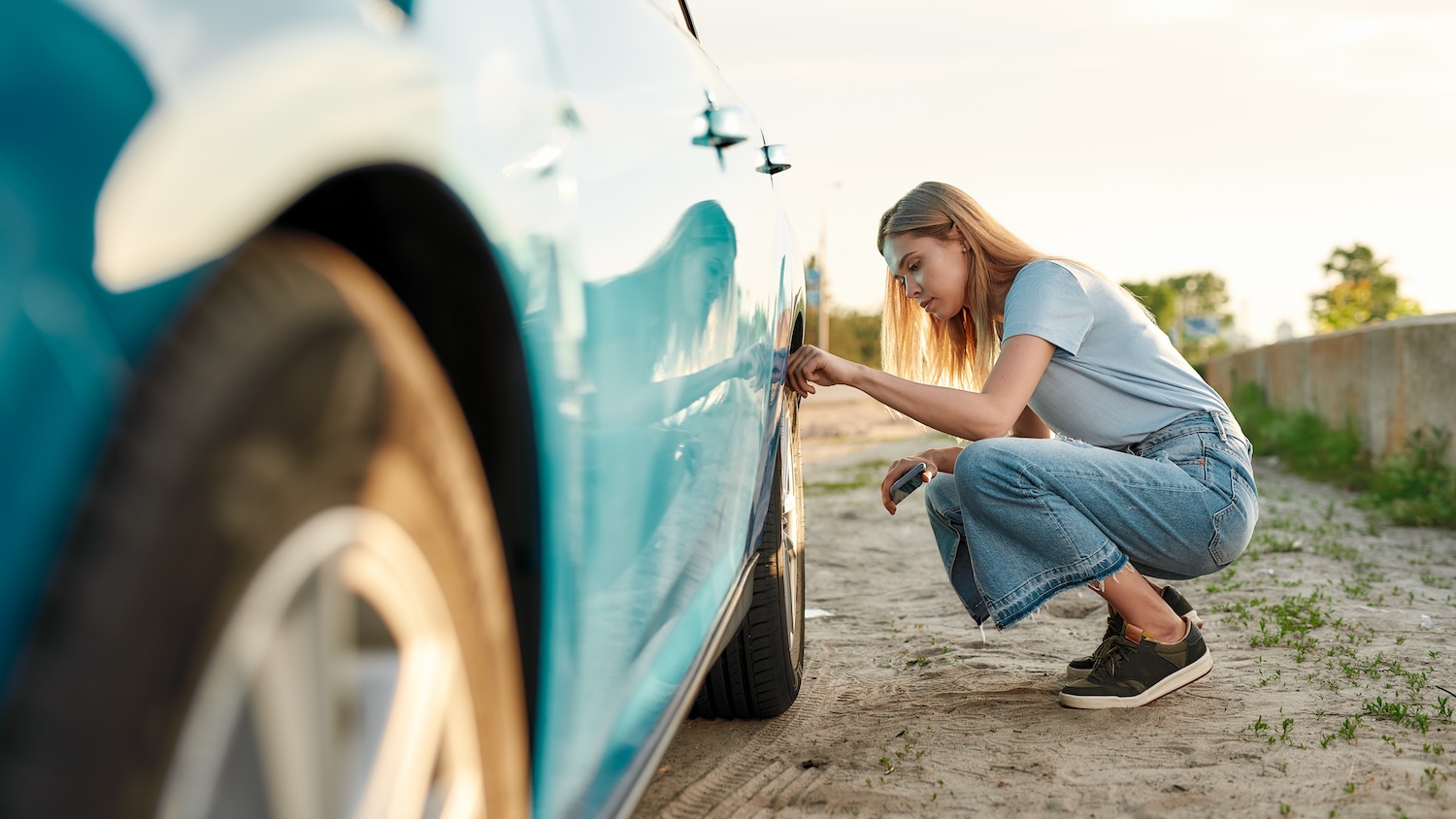As if you don’t already have enough to worry about in your life–dental appointments, anemic IRAs, and whether or not to get your mocha ‘with whip’–now there’s one more thing on your list of stressors: the tire pressure light on your dash that suddenly lit up. You walk around the car, eyeball the tires, and inexpertly give them a kick, but everything looks fine. Meanwhile, the light stays on, mocking you.
While proper inspection and maintenance of your tires doesn’t mean that you never have to worry about that pressure light again, it will take away some of the suspense and help to minimize your risk of getting a flat. Moreover, being aware of wear patterns on your tread can alert you to the development of other automotive problems as well.
Instantly Get Up to 3 Local Windshield Replacement Quotes
Keep Tires Properly Inflated
Every time you get into your car, make sure to perform a quick visual inspection to see if any of your tires appear deflated. You should also use a hand-held pressure gauge, which you can get at any hardware store, to check the tire pressure each time you fill your gas tank.
Checking your tires when you stop at a gas station is a good way to instill this habit, and there’s almost always an air pressure pump right there in case you need to inflate them.
How much pressure is the right amount? Your owner’s manual will provide you with this information, but if that document has disappeared along with one of a pair of all those socks, the sticker on the inside of the driver-side door panel will let you know the right PSI (pounds per square inch).
Here are some additional things to keep in mind:
- Air pressure checks are most accurate when the tires are cold.
- Properly inflated tires last longer and give you better gas mileage to the tune of 3.3 percent per gallon, according to the US Office of Transportation & Air Quality. At three bucks a gallon, that’s a dollar or more each time you fill your tank.
- Under-inflated tires wear out more quickly because the extra stress makes the wheel heat up, which in turn causes the tread to wear out more quickly. Over-inflated tires, on the other hand, are more susceptible to blowouts.
- Cold and hot air affect tire pressure. If the temperature has gone down overnight, and that dreaded pressure light comes on when you pull out of the driveway, don’t worry–it’s probably not a flat. The cold weather has likely caused your tires to lose pressure.
Rotate Tires Regularly
Your tires will last longer if you have them rotated twice a year; most manufacturers recommend having it done every 5,000-10,000 miles. Typically, a mechanic will move the front tires to the rear and vice versa. If all the tires have worn tread, though, they will put the two tires with the most tread on the rear to improve traction.
Why rotate? Most cars carry more weight up front, where the engine is, which causes additional wear on the tire treads. Other conditions, such as wheel misalignment and worn struts, can also cause patterns of wear and tear on the tires. Rotation spreads this wear out evenly, extending the life of the tires and ensuring that the treads maintain traction.
Interpret Signs of Wear
Nothing rivets your attention quite like a blowout in rush hour traffic. Like a teenager looking for attention, your car is telling you that it hates you–and in that moment the feeling is probably mutual.
Unlike an adolescent, however, the wear patterns on your tire treads can actually tell you what’s going on about the overall condition of your vehicle. Learning to spot and interpret these signs when you perform your visual inspection of the tires can mean the difference between getting an inexpensive service check and being gouged by an unscrupulous mechanic who insists that you need a whole new engine.
Here are some common signs of tire wear and tear:
- Uneven tread – Prolonged over- and under-inflation cause recognizable wear patterns. If your tires are under-inflated, the treads tend to wear on either side, leaving the center intact. The opposite is true of overinflated tires, which will wear out first on the center of the tire, since that is where the weight of the car is placed.
- One-sided, or “Toe” Wear – A pattern of wear on the outer side of the tread may indicate a more serious problem: something is causing your wheel alignment to be off. While a simple wheel alignment may be all that’s required, there are other mechanical problems, such as worn ball joints or control arm bushings, that could be the underlying cause of the faulty alignment.
- Cupping – Cupping shows up as a series of diagonal wear patterns across the tire tread. If you see this pattern of tread wear, you need to take your car into a mechanic as soon as possible, because cupping indicates worn or bent suspension parts.
Putting It All Together
Your tires are an important part of the car because they affect other components, such as handling, braking, and overall safety. In a perfect world (where your mocha with whip has zero calories), you should inspect your tires on a monthly basis. If you live in a cold or hot climate, drive great distances or on rough terrain regularly, you’ll want to inspect your tires more frequently.
By examining your tires consistently, keeping them properly inflated and rotated, and learning to recognize common wear patterns, you can minimize the likelihood of flats and prolong the overall life of your car.

